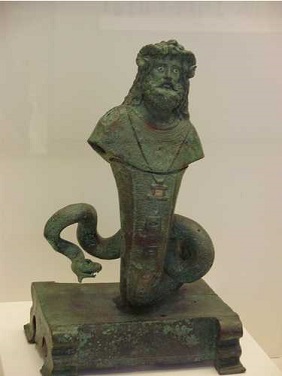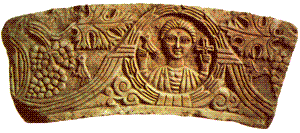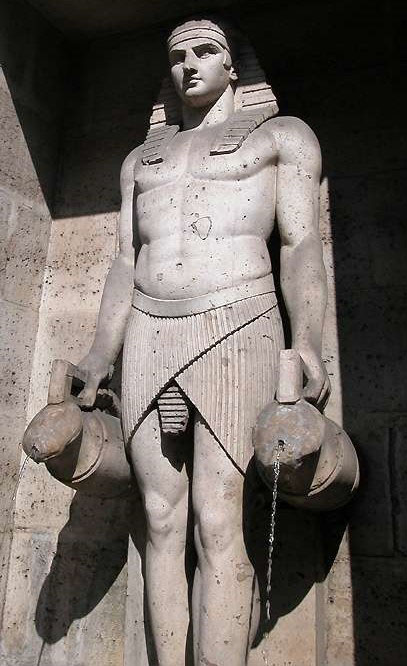|
Serapis
Aliases: Antinous
|
 Carving of deified Antinous dated to 300s A.D.  Coptic Christian carving dated 500s-600s A.D. |
Emperor Hadrian, who put down the Bar Kokhba Revolt in Jerusalem in the 130s and exiled all Jews from Jerusalem, said that Serapis worship and Christianity in Alexandria were identical and practiced in syncretism, adding that Serpais had contributed to Judaism and Samaritanism as well. Hadrian equated Serapis worship with Christianity, went on to found his own dying-and-rising mystery cult based on the strange death of his lover Antinous while undergoing special mystery rites on the Nile, making Antinous’ statue the third most common in antiquity after Augustus and Hadrian himself. As shown by Kenneth Humphreys the iconography of Antinuous from the 300s shows Antinous holding a cross and grapes looking exactly like Coptic Christian iconography from the 500s or 600s.
The Egyptians, whom you are pleased to commend to me, I know thoroughly from a close observation, to be a light, fickle, and inconstant people, changing with every turn of fortune. The Christians among them are worshippers of Serapis, and those calling themselves bishops of Christ scruple not to act as the votaries of that God. The truth is, there is no one, whether Ruler of a synagogue, or Samaritan, or Presbyter of the Christians, or mathematician, or astrologer, or magician, that does not do homage to Serapis. The Patriarch himself, when he comes to Egypt, is by some compelled to worship Serapis, and by others, Christ. It is a race of men, of all the most seditious, vain and mischievous. Hadrian went on to found his own dying-and-rising mystery cult based on the strange death of his lover Antinous while undergoing special mystery rites on the Nile, making Antinous’ statue the third most common in antiquity after Augustus and Hadrian himself. The iconography of Antinuous from the 300s shows Antinous holding a cross and grapes, looking exactly like Coptic Christian iconography from the 500s or 600s.

Antinous as Serapis
The Dying-and-Rising Gods
Leave Comments Here